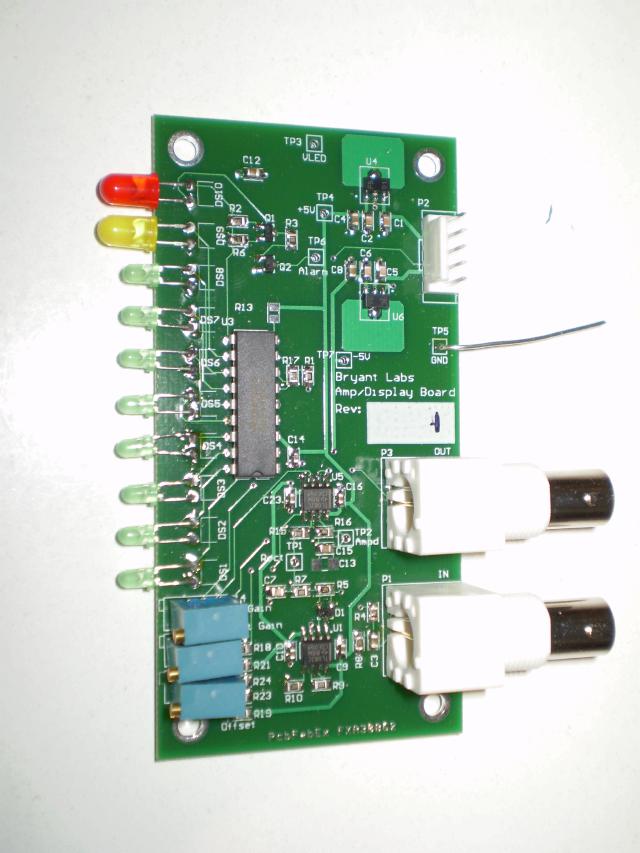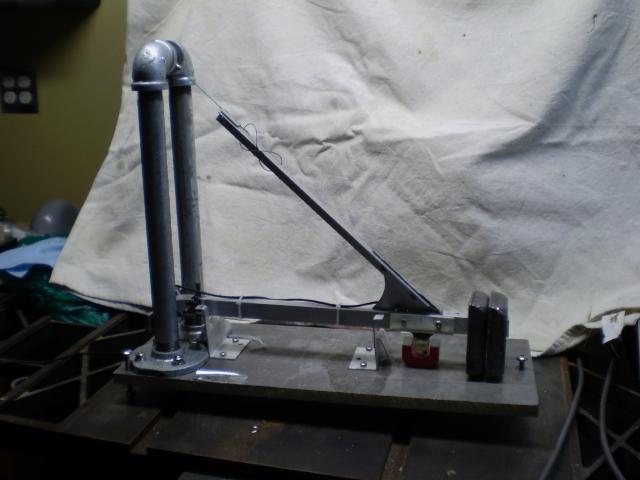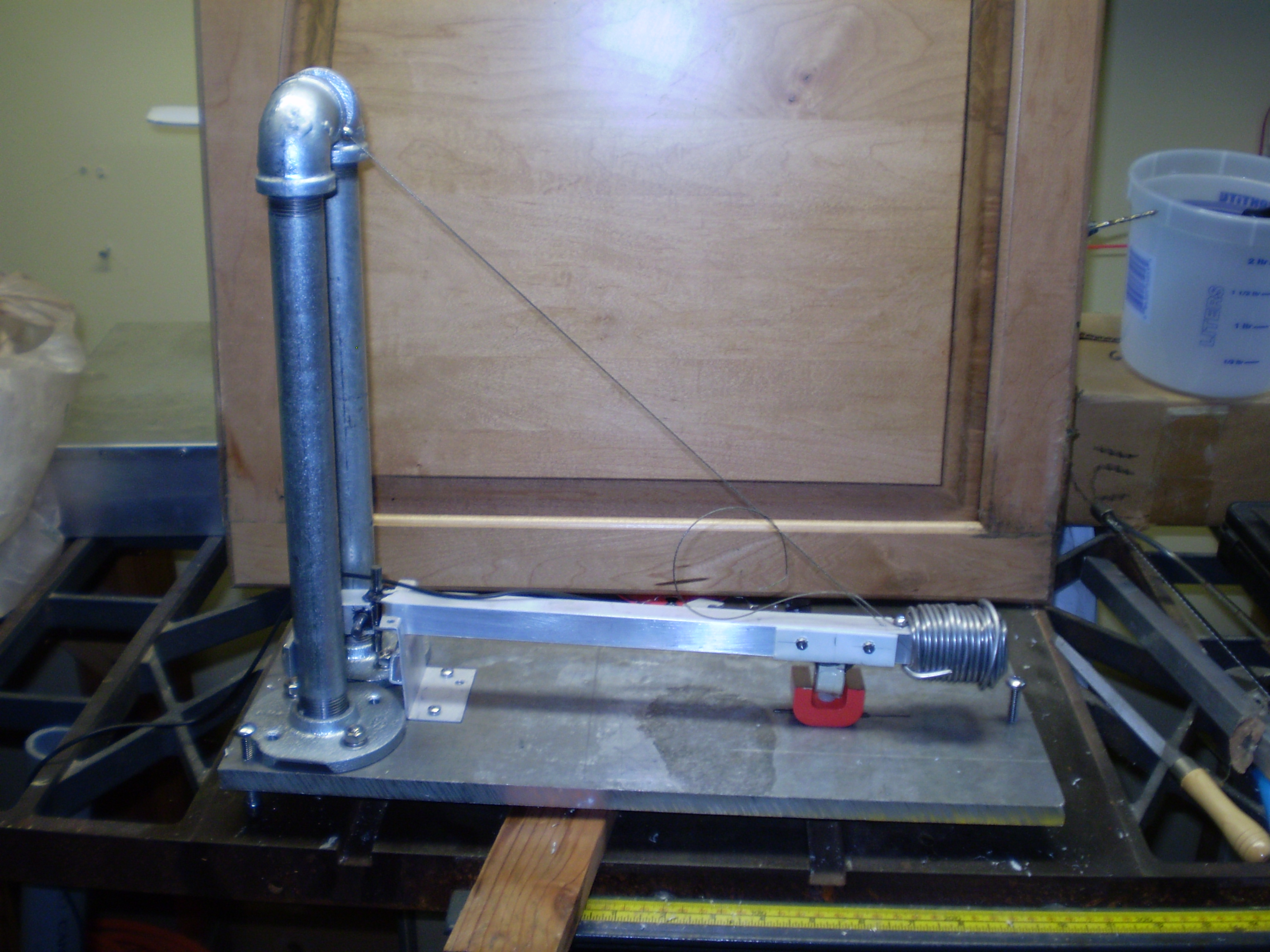Now that the seismometer has been delivered, I can get back to work on my Multi-Frequency Monitor project. The basic idea is to monitor radio activity in several parts of the the spectrum, from VLF up to Microwaves. I was inspired to do this because of the long, deep, solar minimum we just experienced. I want to see what happens as the sunspot numbers go up through this next solar cycle.
My plan is to have several antennas covering the bands of interest, backed up by receivers for each. The receiver outputs will be conditioned, displayed on bar graphs (I LOVE blinky lights!) and then digitized with a MAX187 A/D converter. Radio SkyPipe will handle the data acquisition and display.
First up will be 111MHz (modified aircraft receiver kit), 20MHz (RadioJove), and 24.8KHz (HP3586C SLM).
I designed and built the bar graph cards last year. Here's a photo of one of the prototypes:

I searched all over the net trying to find a kit or module that would do a bargraph. When I couldn't find one, I resorted to building my own.
These will be mounted vertically in a 3U (5.25") card cage, with the LEDs poking out through a panel for each board. This prototype has the wrong Red and Yellow LEDs: they will all be T1 size. In the lower right are the input and output jacks. Next to them are the gain/offset/filter amplifiers. The pots allow me to adjust offset and gain for both the display and the signal going to the A/D. In the middle is the LM391x bar graph driver. They have three variants with either linear, log, or VU scaling. The upper right has the power input and voltage regulators.
These work great. I had only a couple of minor problems with the protos, but otherwise they work great.
Next up, the A/D board.
Cheers,
Keith
My plan is to have several antennas covering the bands of interest, backed up by receivers for each. The receiver outputs will be conditioned, displayed on bar graphs (I LOVE blinky lights!) and then digitized with a MAX187 A/D converter. Radio SkyPipe will handle the data acquisition and display.
First up will be 111MHz (modified aircraft receiver kit), 20MHz (RadioJove), and 24.8KHz (HP3586C SLM).
I designed and built the bar graph cards last year. Here's a photo of one of the prototypes:

I searched all over the net trying to find a kit or module that would do a bargraph. When I couldn't find one, I resorted to building my own.
These will be mounted vertically in a 3U (5.25") card cage, with the LEDs poking out through a panel for each board. This prototype has the wrong Red and Yellow LEDs: they will all be T1 size. In the lower right are the input and output jacks. Next to them are the gain/offset/filter amplifiers. The pots allow me to adjust offset and gain for both the display and the signal going to the A/D. In the middle is the LM391x bar graph driver. They have three variants with either linear, log, or VU scaling. The upper right has the power input and voltage regulators.
These work great. I had only a couple of minor problems with the protos, but otherwise they work great.
Next up, the A/D board.
Cheers,
Keith





 Calendar
Calendar




